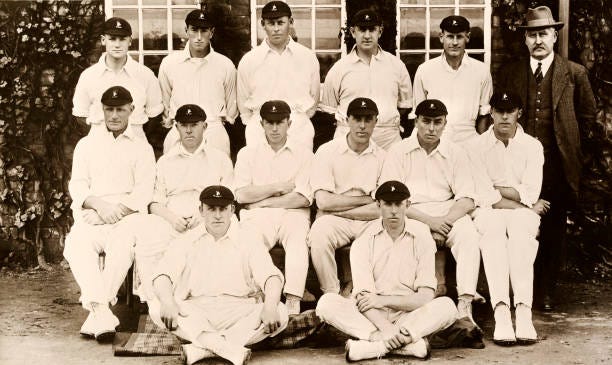The generally forgettable 1924 season has come to an end, the worst summer for cricket since the war so far as the weather is concerned. In fact the last comparatively bad summer was 1912, and before that 1907. Is there a common factor for these three seasons (which hardly deserve the name of ‘summer’)? They are the last three visits of a South African touring team! How do the South Africans (above) attract such bad weather? Do they somehow pick it up on their journey over and bring it with them? Or is Jupiter Pluvius, for all his faults, a secret human rights supporter, who silently makes his own protest against the racist system in that country when everybody else seems content to ignore it? (By the way, on the previous South African visit, in 1904, the weather was generally quite good, after dismal seasons in 1902 and 1903.)
There was a five-week spell from 12 June to 17 July when the weather was mostly good. Before that it was very wet and cold; after that it scarcely stopped raining for long. In 26 county matches no decision could be reached even on the first innings, and another five were abandoned altogether without a ball being bowled. Most of the counties had disastrous seasons financially, the worst hit of all being Warwickshire and Derbyshire. In view of the tremendous amount of rain and the cold miserable weather even when it was dry, the achievements of so many leading batsmen were quite remarkable.
The disappointing South African tour will be reviewed briefly on Friday, followed by county reports and statistics. Yorkshire won the championship for the third successive season, although they were pressed hard by Middlesex and were clearly not the same great team they were in 1923.
The full first-class averages for 1924 can be found at Cricket Archive.
John Ward is an ACS member and a long-serving Zimbabwean cricket statistician. If you would like to contribute to this newsletter, please either respond to the email in which you received it, or leave a comment below.





